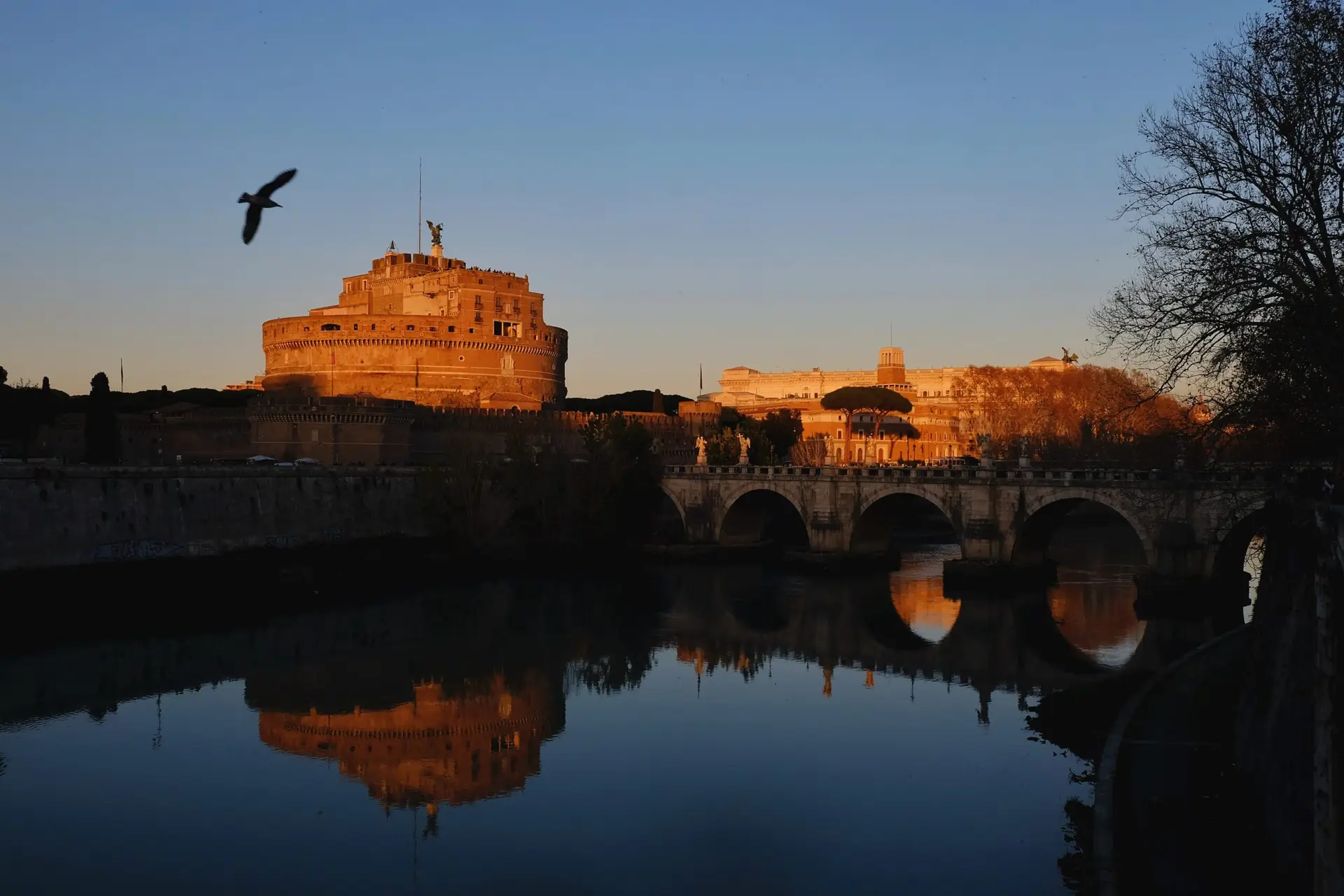Day 2 in Rome: Vatican Crowds, Hidden Pharmacies, and a Golden Sunset
I started my second day in Rome by actually following Google Maps this time—yes, including the part that had me walking through a park I avoided the night before. (If you missed why I was such a wuss on Day 1, you can read all about it here.)
In the morning sun, it didn’t seem so bad. There was a proper road going through it, cars even used it as a shortcut, and the path felt a lot more welcoming. Taking that route cut down my walking time a bit and gave me the chance to pass the Colosseum again. It never gets old, seeing that monumental chunk of ancient history looming quietly in the background of your morning stroll.
Antica Farmacia S. Maria della Scala: Rome’s Forgotten Pharmacy
A Hidden Slice of Medical History
My first stop of the day was something delightfully obscure: Antica Farmacia S. Maria della Scala in Trastevere. While Rome is bursting at the seams with iconic landmarks, it’s places like this—quiet, almost secret—that I find myself hunting down.
Tucked beside the Church of Santa Maria della Scala, this pharmacy sits quietly above a working modern-day drugstore. What makes it special is what lies upstairs: a preserved 17th-century apothecary that was once known across Europe as the “Pharmacy of the Popes.”
It started out as a convent pharmacy, serving only the Discalced Carmelite monks who lived there. Over time, its reputation grew far beyond its cloistered walls. By the late 1600s, the public was welcomed in, and it became the go-to spot for royals, physicians, and—you guessed it—even popes in need of the finest herbal remedies and exotic elixirs.
Fast forward a few centuries, and you can still tour it—by appointment only. I booked a slot by emailing the friars directly at anticafarmaciadellascala@gmail.com. A small donation of €5 gets you a 45-minute guided tour, available in Italian or English (or a mix of both, like mine).
The tour begins through the entrance of the modern pharmacy. You go up a narrow stairwell, and suddenly, you’re not in Rome anymore—you’re in a time capsule. The main sales room is all dark wood, frescoed ceilings, and vintage display cabinets, stocked with jars, tools, and glass containers that once held cures for everything from colds to curses. The checkerboard marble floor has that timeworn elegance you see in period films—honestly, I half-expected a monk-apothecary in robes to shuffle past with a brass mortar in hand.
But it doesn’t stop there. You pass through more rooms—what used to be the herbarium, the alchemy lab, and even the preparation area where medicines were once blended, distilled, and pressed into pills. Much of the original equipment is still there: glass stills, pill machines, and stone counters where herbs were ground and tinctures stirred.
No photos are allowed inside, so I only have an image of the entrance and bits of the outside room—but trust me, crossing that threshold really does feel like stepping into a different world. (If you’re curious what the main sales room looks like, there’s a photo here.) My tour was mostly in Italian, but the guide kindly offered to explain a few highlights to me in English afterwards—something I truly appreciated.
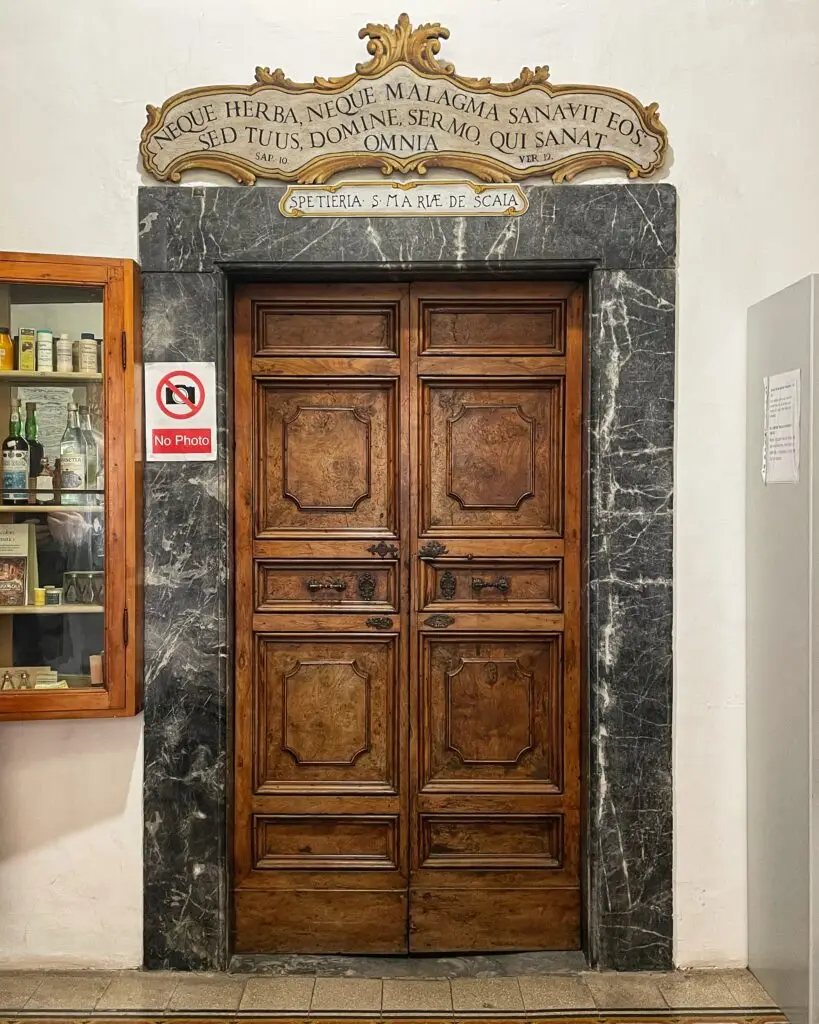
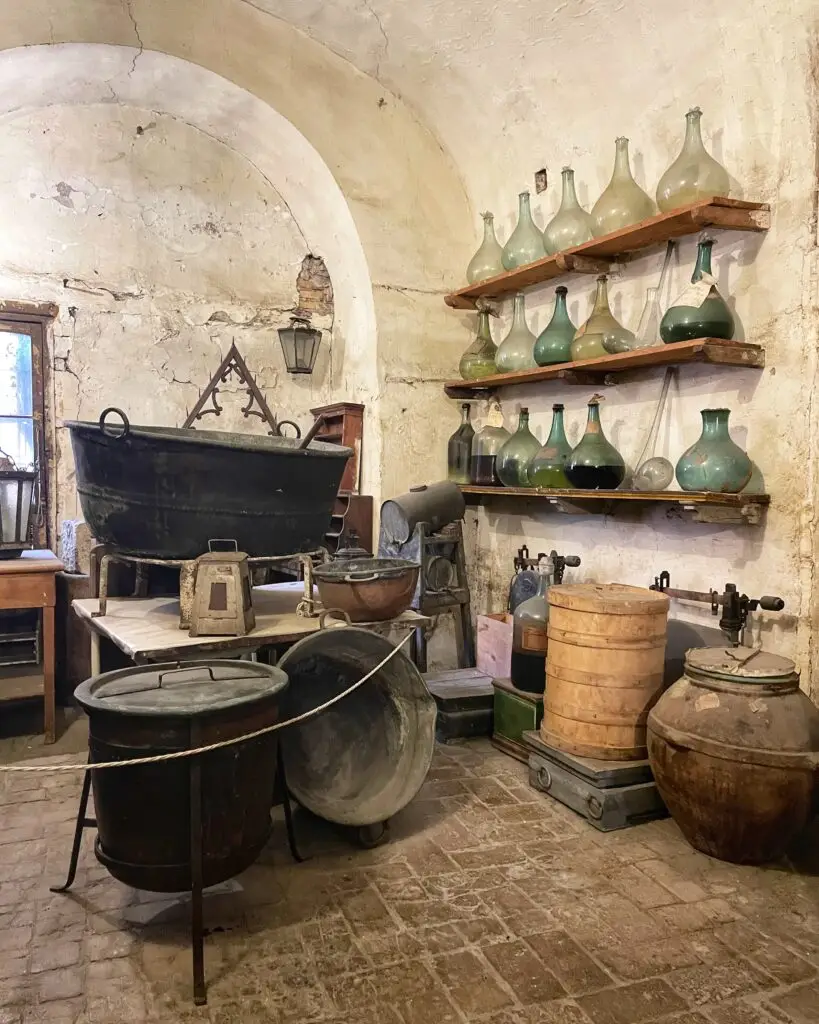

Before the tour ends, just outside the historic rooms, there’s a small table where you can buy a few products made with the pharmacy’s original herbal formulas. I picked up a jar of calendula face cream and a postcard as a souvenir—just something simple to remember the visit by.
It wasn’t just interesting—it was transportive. This was, without a doubt, the ultimate highlight of my trip to Rome. A quiet, preserved slice of history that felt like a gift for those willing to look a little deeper.
The Vatican Museums: A Maze of Masterpieces (and People)
Book Ahead—and Bring Patience
Next up: the Vatican. I’d originally hoped to go earlier in the morning and maybe catch a glimpse of the Pope, but the pharmacy tour had priority. I booked my skip-the-line tickets well in advance—which turned out to be a very good decision. As I made my way toward the entrance, the regular ticket line was already stretching far around the corner.
Once inside, the layout felt confusing. There wasn’t a clear starting point, at least not for me. I ended up buying an audio guide, mainly because it came with a map (which was honestly all I wanted). I didn’t want to be slowed down listening to the audio or stuck behind crowds—which, like the day before, were everywhere.
I skimmed through most of the exhibits, pausing when something caught my attention. But with the number of tour groups moving like herds through the halls, it often turned into a game of squeezing past clusters just to make it to the next room.
Quiet Moments in the Gallery of Maps
When I finally got to the Gallery of Maps, I found it nearly empty. For the first time all day, I could breathe. I lingered here, taking in the details and looking up constantly to admire the ceilings. The scale, the intricacy—it was all so rich, and best of all, I had the space to enjoy it.
The Sistine Chapel: Beautiful, But Overwhelming
And then… the Sistine Chapel.
One of the most revered religious and cultural sites in the world—and it was packed. There was just one narrow space where people parted like a sea so others could walk through, and I went with the flow, fast.
I didn’t stay long. The fresco itself, while stunning, is also one of the most reproduced artworks in history. And though photography is not allowed, plenty of people weren’t following that rule. It was hard to truly appreciate the space when it felt more like a concert crowd than a sacred chapel. It was also surprisingly warm inside, even in winter. I left quickly, mostly just to feel the cool air again.
The Basilica That Got Away
My main reason for visiting the Vatican wasn’t actually the museums—it was to see St. Peter’s Basilica. I’d assumed I could access it from the museums, but I must have missed the fine print. Or maybe it required a different ticket, or was part of the tour I didn’t end up joining due to my pharmacy visit.
I know that St. Peter’s can be visited for free without a ticket, but the queue outside was massive. It came down to a decision: queue for the basilica or chase the sunset.
I picked the sunset. (Yes, I know I could’ve seen the sunset from St. Peter’s too. But oh well. Another treat for another time.)
Golden Hour by the Tiber River
I walked alongside the Tiber River and watched the sunset descend over Castel Sant’Angelo, painting the stone in a glowing gold. The further I wandered, the thinner the crowd became. It was a much-needed breather after the crowds of the Vatican.
It was one of those small but perfect travel moments—quiet, beautiful, and unexpectedly peaceful.
A Serendipitous Find: Antica Libreria Cascianelli
As night fell and I wandered aimlessly, I stumbled across a little shop window filled with vintage stationery. Naturally, I was drawn in.
The shop was Antica Libreria Cascianelli, one of the oldest bookstores in Rome. Inside was an eclectic, dusty collection of rare books, maps, and curious items from around the world. The kind of place that feels like it belongs in a Wes Anderson film.
Valentina, the woman behind the counter, looked stern at first but was lovely once we got talking. She told me the store was over 200 years old. The original owner had sold books, and when she and her friends took over, the old stock remained. Valentina, a collector herself, had added much of what’s there now.
I bought a few vintage postcards and a beautifully illustrated Art Nouveau menu card. She wrapped them carefully, and to this day—more than a year later—they’re still tucked away, waiting for the acid-free folio I keep telling myself I’ll buy.
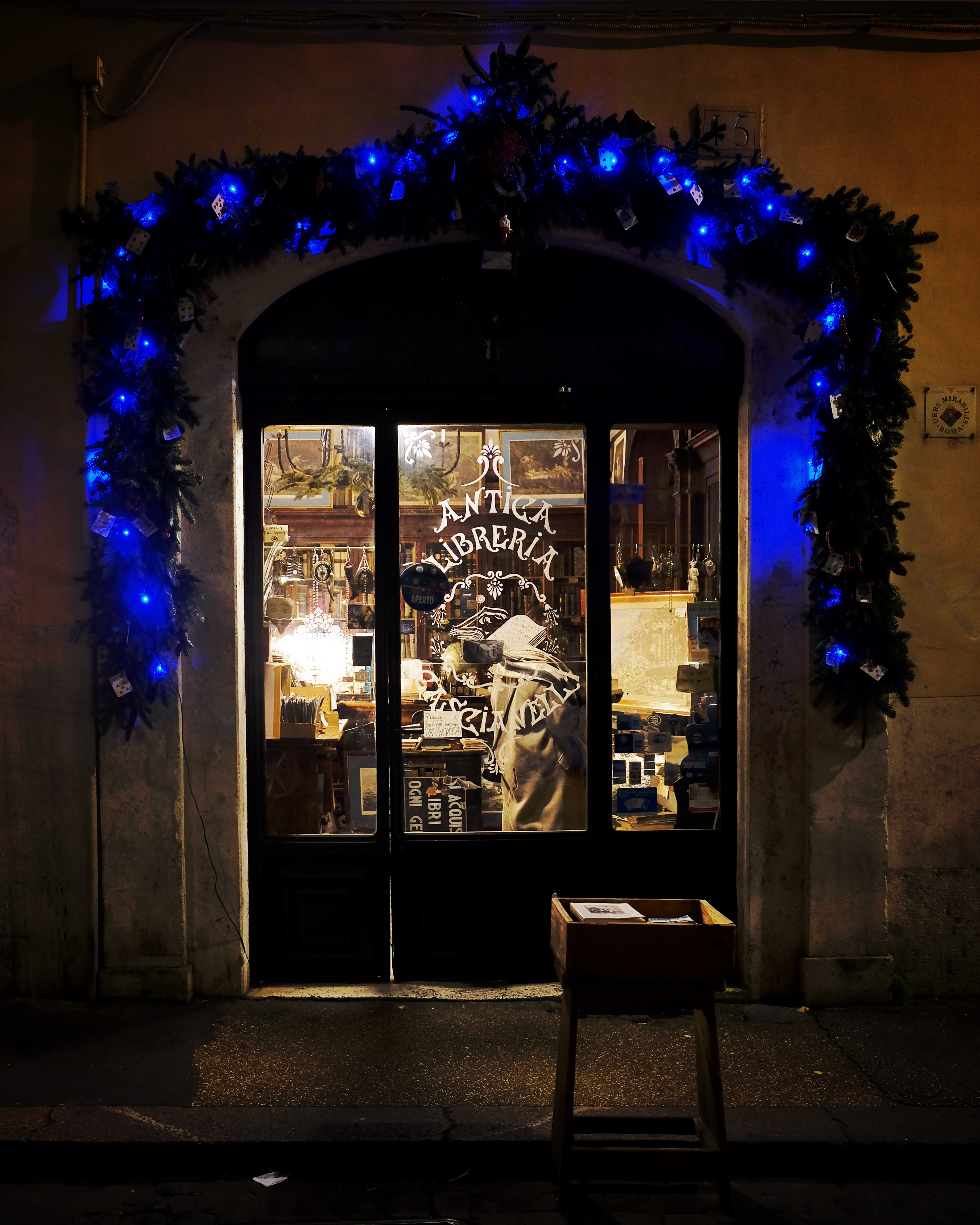
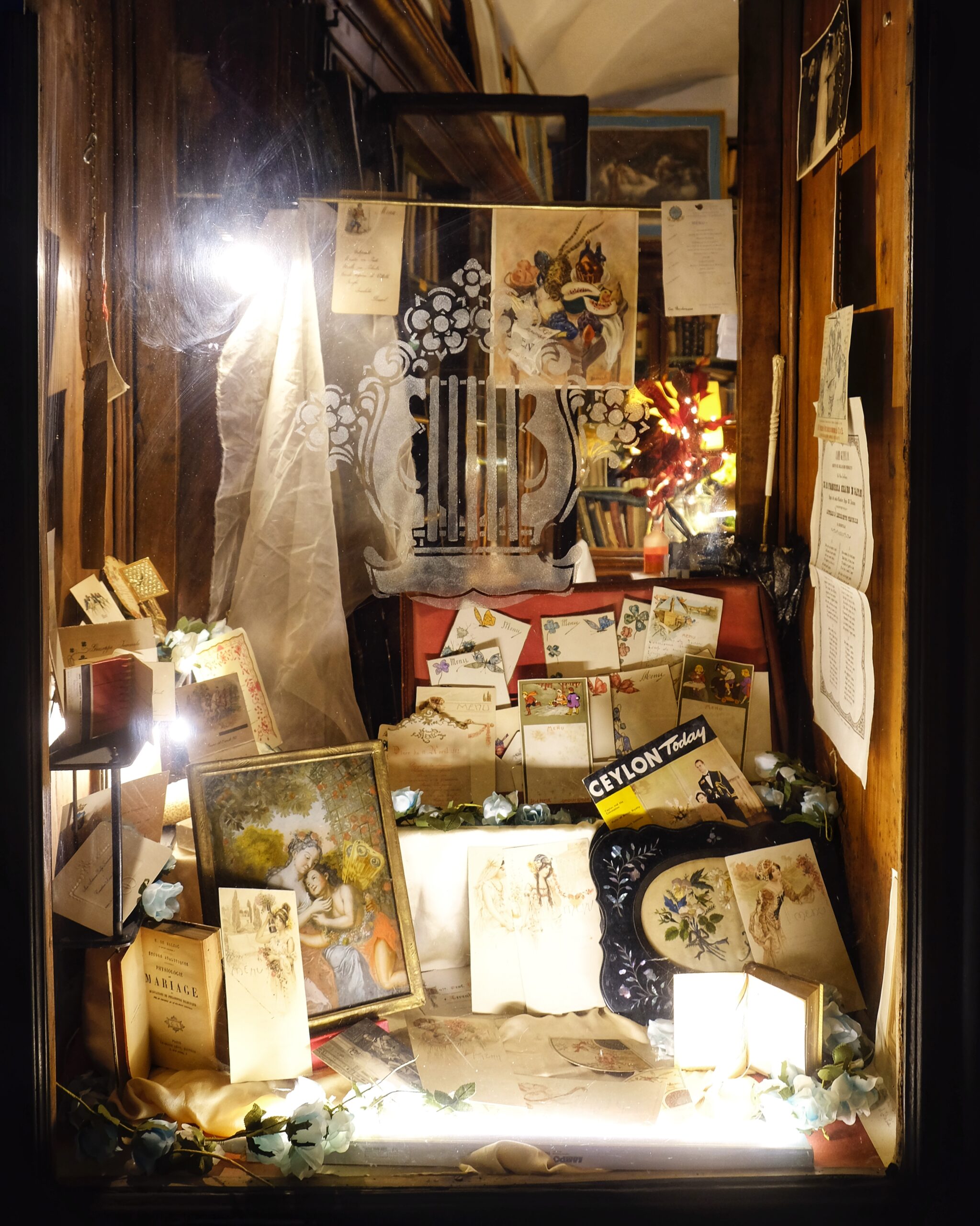
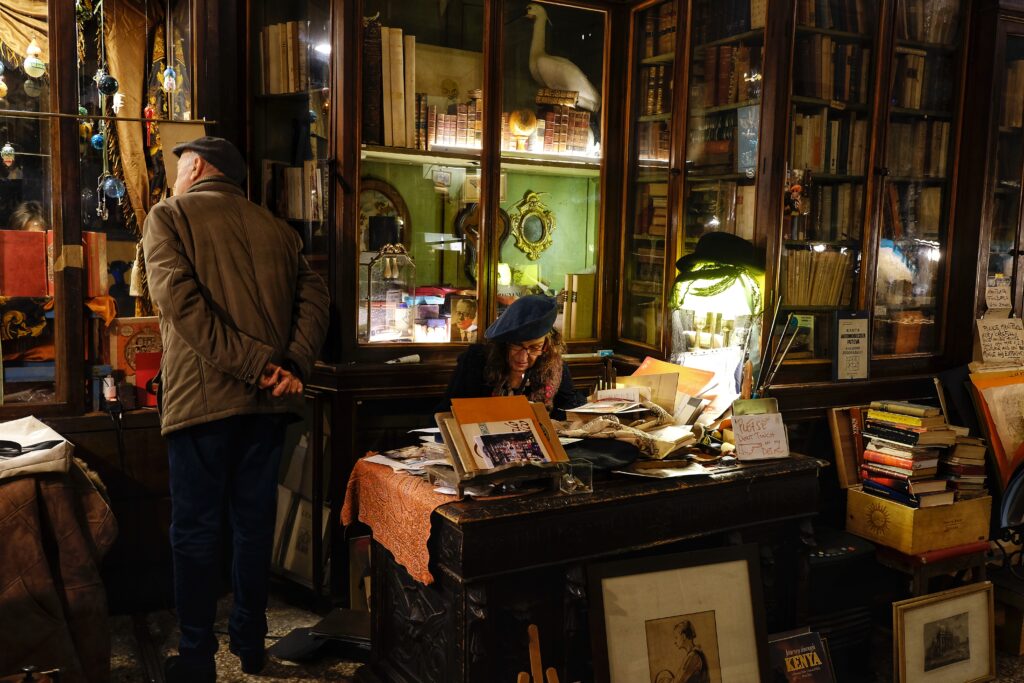
This place wasn’t on my itinerary at all, but it turned out to be another personal favorite—a quiet, unexpected highlight that added something special to the end of a very full day.
Street Food and Trastevere Vibes
Eventually, I found myself back in Trastevere, where the vibe had shifted completely from the morning. It was buzzing, vibrant, and filled with life.
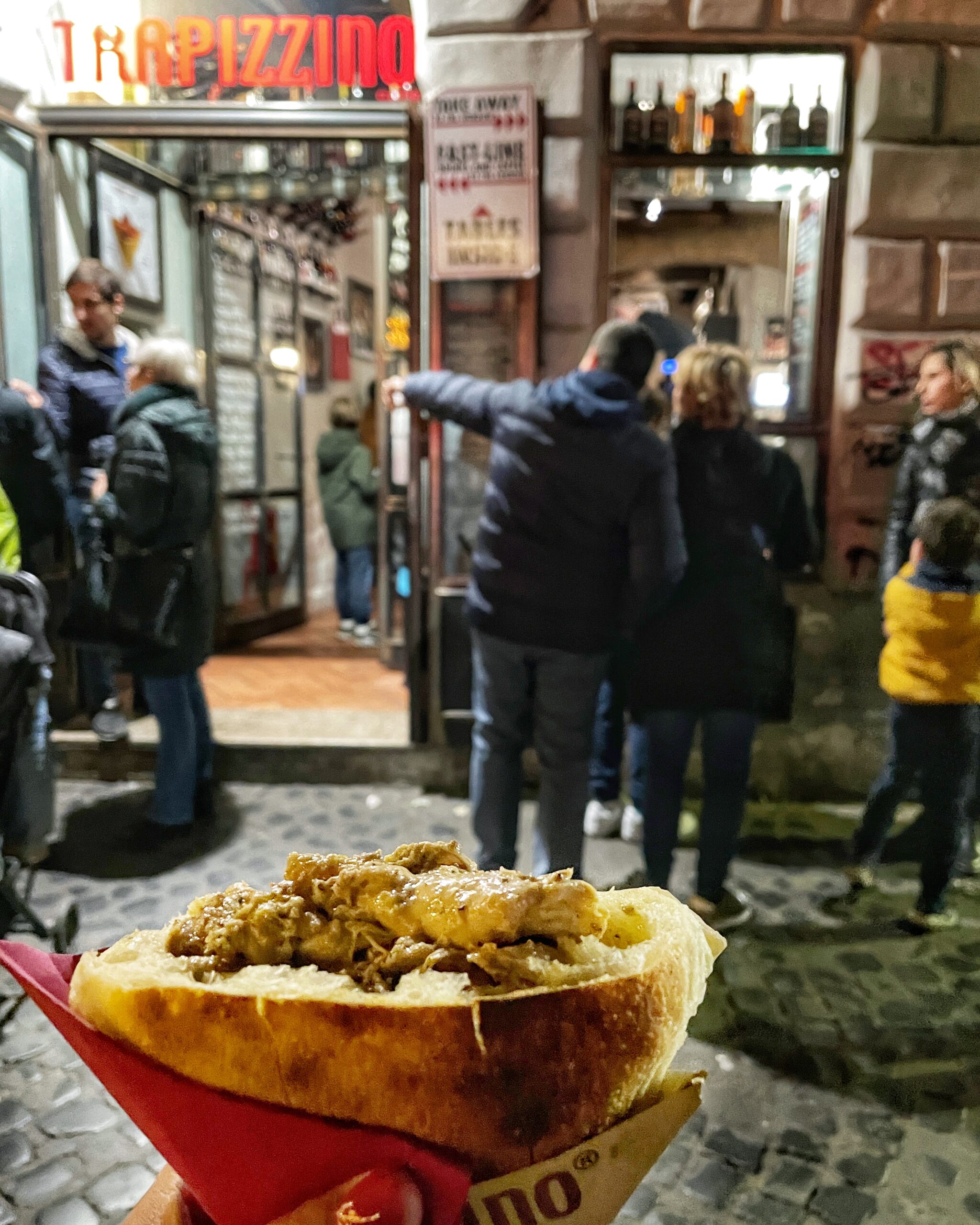
I stopped by Trapizzino, a place that had been saved on my map for weeks. They serve street food with a Roman twist—triangular pockets of pizza dough filled with delicious traditional fillings. I went for the Pollo alla Cacciatora (Chicken Cacciatore), which reminded me a lot of chicken adobo thanks to the sharp, vinegary flavor.
Like most of my meals in Rome, I ate standing on the sidewalk. And honestly, it felt right. It’s street food, after all.
The Walk Back: Bravado (and Stubbornness) in the Dark
Feet sore and legs protesting, I slowly made my way back to the hotel. Despite the fatigue, I was determined to walk—yes, even through that same dark park. Armed with a new sense of bravado (and a good dose of stubbornness), I chose not to figure out the bus.
Besides, by now, the darkness didn’t seem so intimidating. And that felt like a small victory.
Final Thoughts
Day two in Rome was a whirlwind—starting with a quiet ancient pharmacy, spiraling into the chaos of the Vatican Museums, then grounding me again with sunset over the Tiber and a surprise vintage bookstore.
It wasn’t perfect, but it was mine. The kind of day that makes a trip feel personal—where getting a little lost leads to the best offbeat finds, and skipping one landmark means stumbling on something unforgettable instead.
Plan Your Own Day 2 in Rome
Here are some links and tips to help you retrace (or reimagine) my footsteps:
Visits
Antica Farmacia S. Maria della Scala
Location: Google map
Booking: anticafarmaciadellascala@gmail.com
Tours by appointment only. €5 donation. No photography allowed.
Vatican Museums
Tickets and info from official site: https://www.museivaticani.va
Alternatively, you can book any combination of tours from Get Your Guide. See below.
St. Peter’s Basilica
Free entry. Opens at 7:00 AM. Long queues expected. Consider combined tours for faster access.
Shop
Antica Libreria Cascianelli
Location: Near Piazza Navona
Instagram: https://www.instagram.com/libreriacascianelli/
Eat
Trapizzino (Trastevere)
Website: https://www.trapizzino.it
